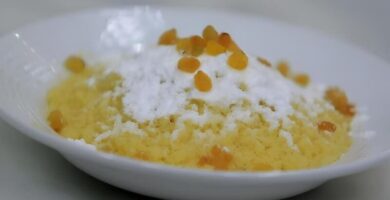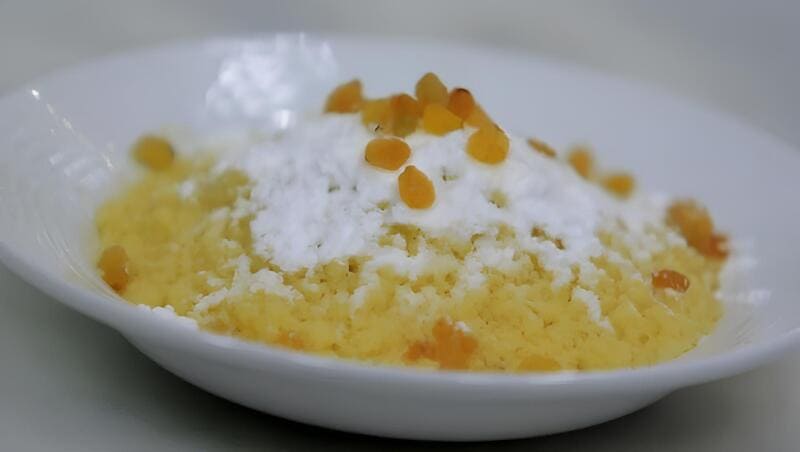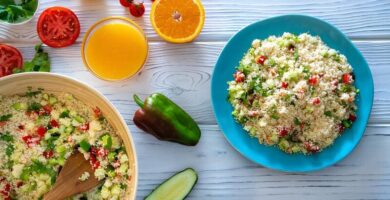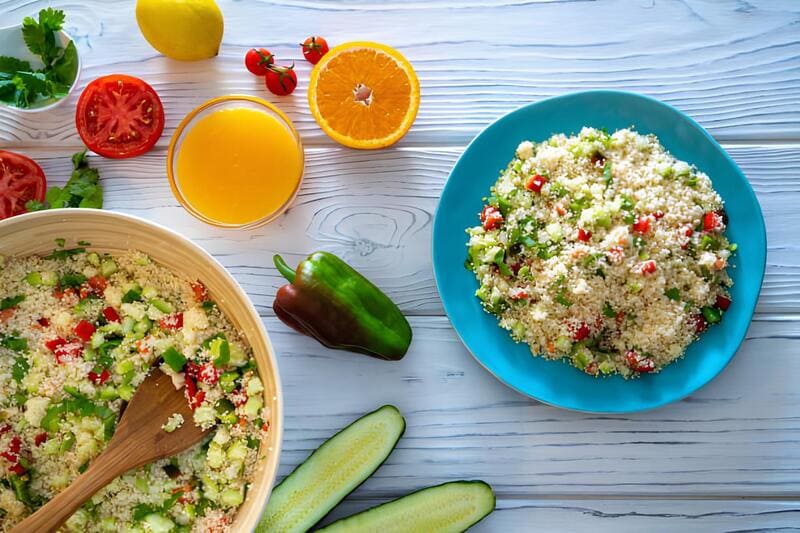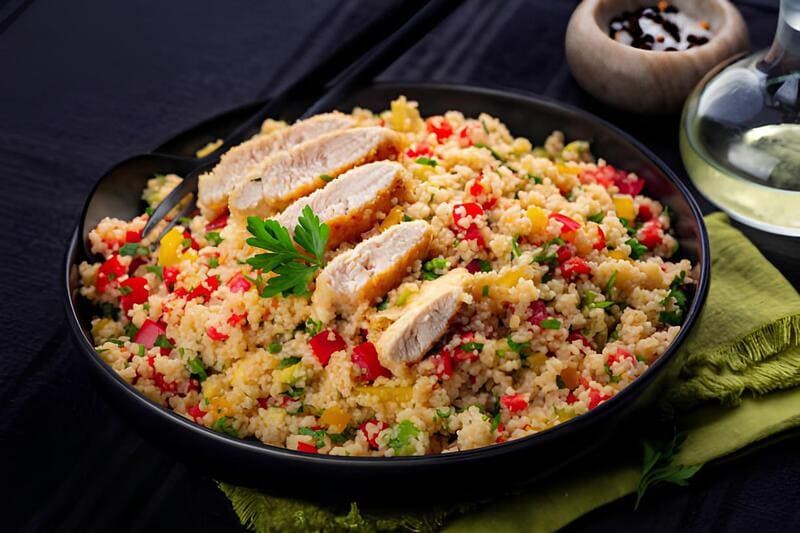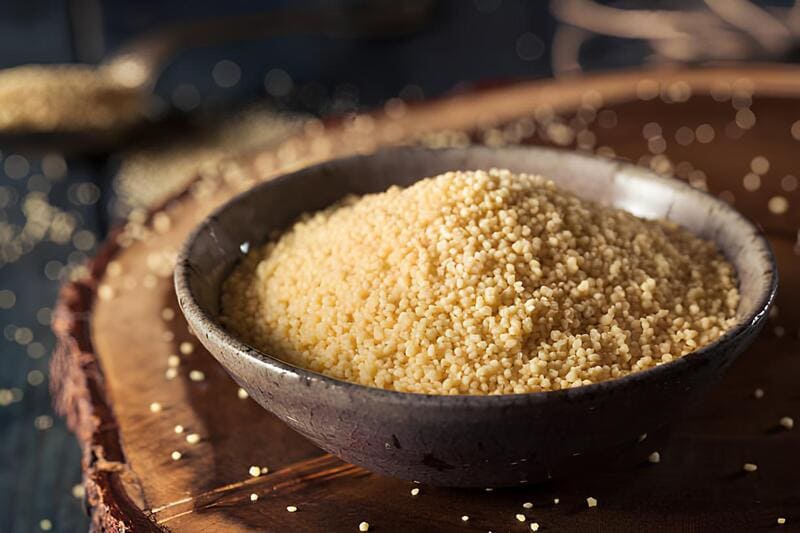
Couscous has been a staple in North African cuisine for centuries and boasts a variety of preparations. In Egypt, couscous is often referred to as “Maftoul,” showcasing a unique texture and flavor that sets it apart from other regional interpretations.
This dish is frequently enjoyed during festive occasions and family gatherings, marking its importance in Egyptian culinary traditions.Egyptian-style couscous offers a delightful combination of soft, fluffy grains with a rich, buttery taste. Its simplicity in ingredients highlights the skill and attention required in its preparation. Made with just a few basic ingredients, this dish is both accessible and satisfying, making it a household favorite.
Ingredients
- 1 kg flour
- 1/2 tsp salt
- 1 1/2 cups water
- 1/2 cup ghee
Preparation
- In a large bowl, combine the flour and salt.
- Gradually add water while mixing, making sure to break the dough into small, granular pieces.
- Mix the flour and water for about 10 minutes until it forms tiny, consistent granules (resembling couscous).
- Using a strainer, sift the mixture, breaking up any large pieces to create uniformly sized couscous grains.
- Prepare a steamer by placing gauze in a pot with small holes to allow steam to pass while preventing the couscous from falling through.
- Spread the couscous over the gauze and cover it, steaming for about 10 minutes.
- In a bowl, mix the steamed couscous with melted ghee, ensuring each grain is well coated.
- Return the couscous to the steamer and steam for another 5 minutes for final cooking.
Did you know?
Couscous, known in Egypt as Maftoul, has been a part of Mediterranean and Middle Eastern cuisines for centuries. Its origins can be traced back to the Berbers, who invented this innovative method of rolling and shaping flour to make it cook faster. Couscous is not only versatile but also nutrient-rich, offering a good source of protein and fiber while being low in fat.
In Egypt, couscous can be found as both a savory and sweet dish. Sweet couscous is often enriched with raisins, nuts, and a drizzle of honey or sugar, adding an irresistible layer of flavor for dessert lovers. As a savory dish, it pairs excellently with lamb or chicken stew. The traditional preparation method of steaming couscous ensures that the grains remain fluffy and absorb the flavors they are paired with, making every bite a burst of delicious taste.
By mastering this simple yet effective technique of preparing couscous, home cooks can bring a significant part of Egyptian culinary heritage into their kitchens. So, whether you’re a fan of savory meals or sweet delights, homemade Egyptian-style couscous is truly a delightful addition to your cooking repertoire.

